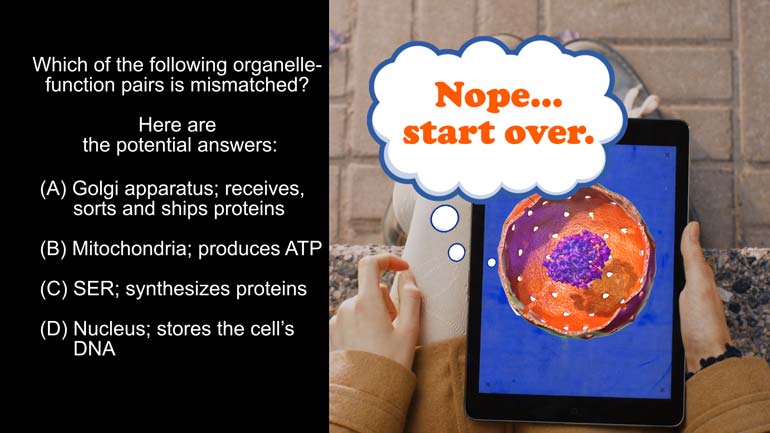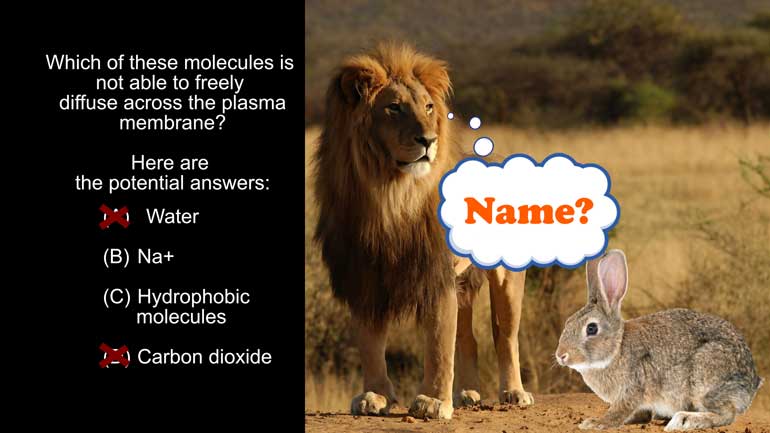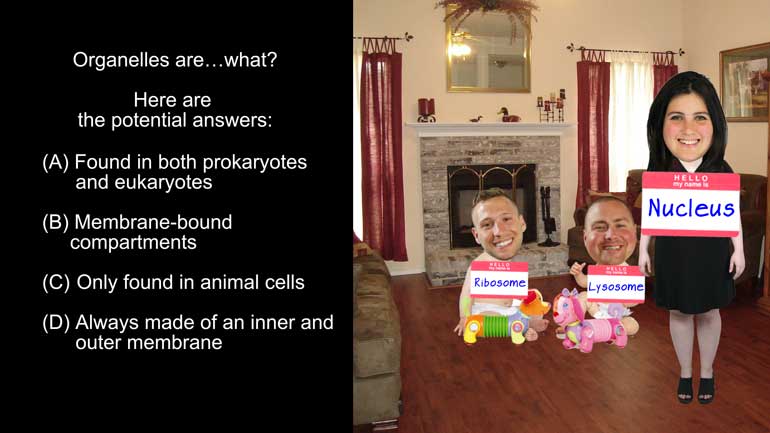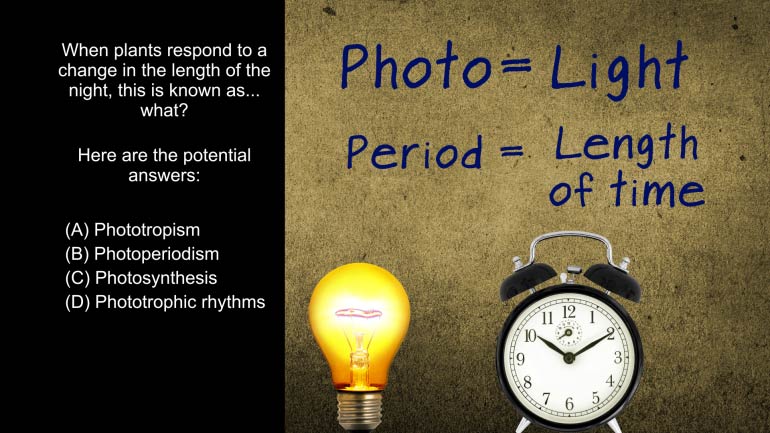ShmoopTube
Where Monty Python meets your 10th grade teacher.
Search Thousands of Shmoop Videos
Free Energy and Molecular Building Blocks Videos 11 videos
AP Biology: Free Energy and Molecular Building Blocks Drill 1, Problem 1. Which statement incorrectly describes the properties of water?
AP Biology 5.3 Free Energy and Molecular Building Blocks. What is programmed cell death known as?
AP Biology 3.5 Free Energy and Molecular Building Blocks. What is a dog's panting an example of?
AP Biology 3.4 Free Energy and Molecular Building Blocks 32 Views
Share It!
Description:
AP Biology 3.4 Free Energy and Molecular Building Blocks. Why is the surface area to volume ratio of cells important?
Transcript
- 00:03
Here’s your shmoop du jour, brought to you by nutrients…
- 00:06
…so much healthier for you than oldtrients. [woman eating food and face turns green]
- 00:09
Maybe clean out the fridge once in a while…
- 00:12
Why is the surface area to volume ratio of cells important?
- 00:16
And here are the potential answers: To say that the ratio is NOT important in
Full Transcript
- 00:23
the exchange of materials between the cell and its environment is just oh so wrong.
- 00:27
The ratio between the surface area and volume of cells has a gigantic impact on the behavior,
- 00:31
physiology and other qualities of their environment.
- 00:34
Like when your lungs expand and contract to take in oxygen and release carbon dioxide. [lungs expanding and contracting]
- 00:38
So, breathe easy, Shmoopers, Answer D is incorrect. [a couple with their arms out wide on a beach]
- 00:42
Answer C is also suspect.
- 00:44
Size and shape affect the ability of diffusion to supply the demands of the cell.
- 00:49
Having an equal surface area-to-volume ratio would inhibit the necessary flow of materials
- 00:53
across plasma membranes.
- 00:55
Cells need breathing room to diffuse more oxygen and take in the nutrients they crave. [a cell struggling to breathe]
- 01:00
Answer C is not the ratio that cells have in mind for a peaceful existence.
- 01:04
So is a smaller surface area to volume ratio better than a large ratio?
- 01:09
Or is it better the other way around?
- 01:11
Remember that surface area is very important to cell function because everything the cell [Inside of a cell with arrow showing nutrients enter here]
- 01:15
could possibly want makes its way through the cell membrane.
- 01:18
As the size of a cell decreases, the ratio of surface area to volume increases. [a green cell decreasing in size]
- 01:23
As a result, small cells are more efficient at diffusion because of their high surface [one green cell multiplies into 5 cells]
- 01:27
area to volume ratio.
- 01:28
A long, thin cell like a nerve cell is a perfect example of efficiency.
- 01:33
On the other side of the coin, when a cell increases in size, the surface area expands [A green cell increasing in size]
- 01:37
at a lower rate than the volume.
- 01:39
Based on that, the correct answer is B, the larger the ratio, the better the cell is at
- 01:44
exchanging material with its environment.
- 01:47
It also explains why protozoa should never be the size of a school bus. [A protozoa bus picking up school girls]
- 01:51
They would starve to death because they would have a hard time getting enough oxygen, water
- 01:56
and nutrients transported across their plasma membranes. [Gigantic cell destroying a city with laser vision]
- 02:01
Besides…like the creators of Godzilla won't need any more inspiration for their horror movies…
Related Videos
AP Biology: Biological System Interactions Drill 1, Problem 1. Complete the sentence about a saturated fatty acid.
AP Biology: Essential Life Process Information Drill 1, Problem 1. If one parent is heterozygous for the sickle cell trait while the other par...
AP Biology: Evolution Drives the Diversity and Unity of Life Drill 1, Problem 1. The first cells on planet Earth were likely what?
AP Biology: Free Energy and Molecular Building Blocks Drill 1, Problem 1. Which statement incorrectly describes the properties of water?
AP® Biology: Evolution Drives the Diversity and Unity of Life Drill 1, Problem 2. What was likely the first genetic material?














